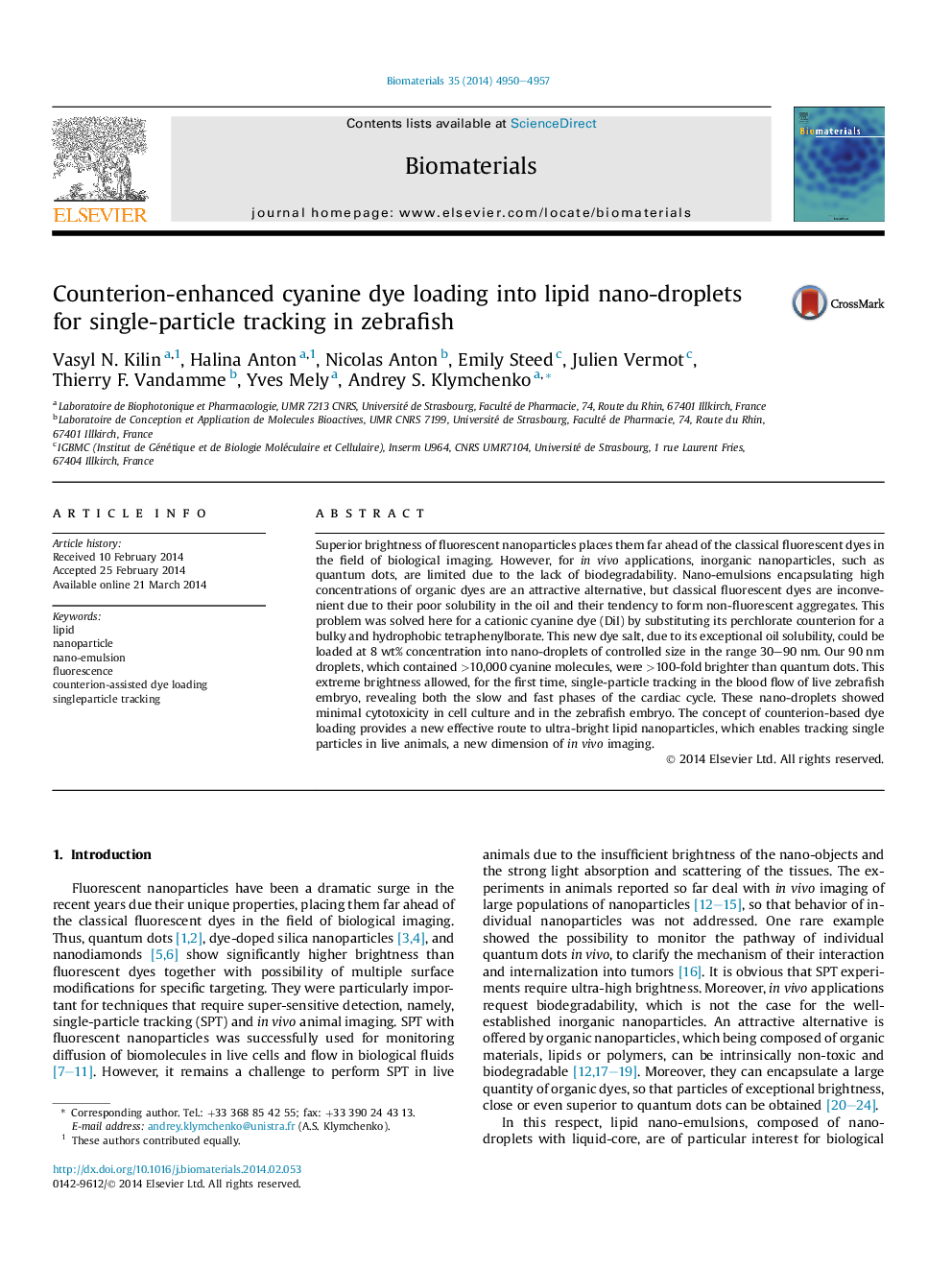| کد مقاله | کد نشریه | سال انتشار | مقاله انگلیسی | نسخه تمام متن |
|---|---|---|---|---|
| 6180 | 467 | 2014 | 8 صفحه PDF | دانلود رایگان |
Superior brightness of fluorescent nanoparticles places them far ahead of the classical fluorescent dyes in the field of biological imaging. However, for in vivo applications, inorganic nanoparticles, such as quantum dots, are limited due to the lack of biodegradability. Nano-emulsions encapsulating high concentrations of organic dyes are an attractive alternative, but classical fluorescent dyes are inconvenient due to their poor solubility in the oil and their tendency to form non-fluorescent aggregates. This problem was solved here for a cationic cyanine dye (DiI) by substituting its perchlorate counterion for a bulky and hydrophobic tetraphenylborate. This new dye salt, due to its exceptional oil solubility, could be loaded at 8 wt% concentration into nano-droplets of controlled size in the range 30–90 nm. Our 90 nm droplets, which contained >10,000 cyanine molecules, were >100-fold brighter than quantum dots. This extreme brightness allowed, for the first time, single-particle tracking in the blood flow of live zebrafish embryo, revealing both the slow and fast phases of the cardiac cycle. These nano-droplets showed minimal cytotoxicity in cell culture and in the zebrafish embryo. The concept of counterion-based dye loading provides a new effective route to ultra-bright lipid nanoparticles, which enables tracking single particles in live animals, a new dimension of in vivo imaging.
Journal: Biomaterials - Volume 35, Issue 18, June 2014, Pages 4950–4957
